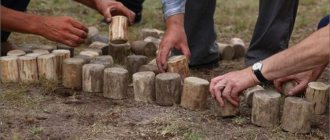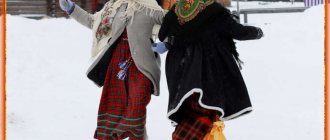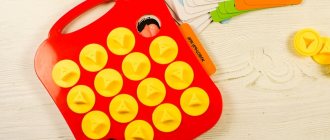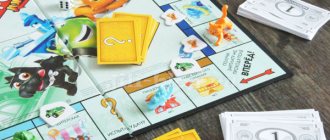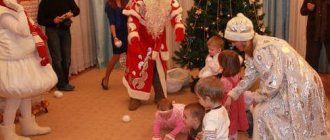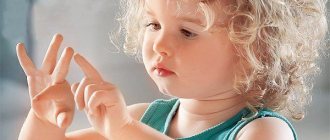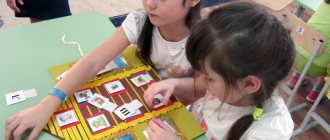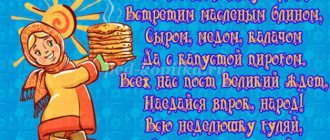Card index of sedentary games in the second junior group
1. "Who will pass more quietly"
Objectives: to introduce walking in a given direction, to develop the ability to maintain balance.
Progress of the game: Children walk in a free formation in one direction. The teacher offers to walk quietly on tiptoes (shows how to do it). Then he gives the signal: “Now let’s walk quickly.” The walking speed changes several times according to the signal.
Source: O.N. Morgunova “Physical and recreational work in preschool educational institutions”
2. "Ball"
Progress of the game: Children depict how a balloon is gradually filled with air: they slowly raise their hands up and puff out their cheeks. But the balloon “burst”: the children are slowly in a relaxed state and fall to the floor, saying: shhhhh
Source: O.N. Morgunova “Physical and recreational work in preschool educational institutions”
3.
“Grains”
Objectives: teach children to act according to the rules, develop endurance.
Progress of the game: Educator: Planted the seeds in the ground. (Children sit on the floor, squeeze into a ball.) It rained, and then the sun shone. The grains began to sprout, sprouts appeared. (Children slowly rise, pull themselves up, raising their hands - the “sprouts” - up and turning towards the “sun”).
Source: O.N. Morgunova “Physical and recreational work in preschool educational institutions”
4. "Bubble"
Objectives: teach children to act on the teacher’s command, develop attention.
How to play: Children and an adult stand in a circle holding hands. Educator: Blow up a bubble. Pout big. Stay like this and don't burst out. Children gradually move back to expand the circle. When they hear the words “The bubble has burst,” they lower their hands and say “sh-sh-sh.” The game is repeated 2-4 times Source: O.N. Morgunova “Physical and recreational work in preschool educational institutions”
5. "Kwa-kwa-kwa"
Tasks:
develops auditory memory and, to some extent, coordination of movements and attentiveness.
Game description:
The leader is blindfolded with a blindfold, and the rest of the children stand around him. The presenter begins to spin around and say a chant: “Here is a frog jumping along the path, stretching out its legs, Saw a mosquito, Screamed... “At the word “screamed,” the leader points his fingers in front of him. The player to whom the presenter points (or closer to whom) says: “Kwa-kwa-kwa.” The presenter must say the name of this player. If the leader guessed correctly, then the identified player becomes the next leader, otherwise the leader repeats everything.
Rules of the game 1. The leader is blindfolded, and the rest of the children stand around him. 2. The leader spins around and says the above speech. 3. On the word “shout”, the leader points his fingers in front of him, and the player to whom he is pointing must say: “kva-kva-kva”. 4. If the leader correctly guesses who is in front of him, then this player becomes the leader, otherwise the game starts again from the second point.
Notes:
The host is not allowed to touch the players. To complicate the game, you are allowed to pronounce kwa-kwa in an unnatural voice.
6. "Kitty"
Tasks:
The game develops artistry and dexterity.
Progress of the game:
The child crawls on all fours, pretending to be a cat. He stops and turns his head (the cat looks around), then tilts his head (the cat drinks milk). For children over two years old, you can complicate the game: the cat crawls between the legs of an adult, under a chair, climbs onto the sofa, lies down, purrs.
7. "Humpty Dumpty"
Progress of the game
Children stand in a relaxed position, arms hanging freely. Under the text that the adult pronounces, turn the body left and right (the arms should dangle freely, like a rag doll).
Educator:
Humpty Dumpty sat on the wall. Humpty Dumpty . Fell in his sleep.
The children relax on the floor. The game can be played with one child or with a subgroup of children.
8. "Cold-warm"
Tasks:
develops attention and thinking.
Progress of the game:
Children sit on the carpet with their legs folded cross-legged.
Educator: The north wind blew. It became cold, cold. (The children curl up into balls, crossing their arms over their chests.)
At the signal “The sun has come out. It has become warm and warm.” The children relax and fan themselves. The game is repeated 2-3 times.
Source: O.N. Morgunova “Physical and recreational work in preschool educational institutions”
9."Find a Pair"
Find a pair - the game develops classification and sorting skills, hand-eye coordination, hand motor skills, and thinking skills.
Game description
Objects that match each other according to some characteristics are laid out on the table. Mix them. The child is asked to take any object and find a pair for it, and then explain why he considers these objects to be paired.
Rules of the game
1. Various objects are collected that are combined with each other (pencil and paper, sock and shoe, lock and key, etc.) 2. Place the objects on the table and mix them. 3. The child is seated at the table. 4. An adult chooses any object and asks the child to find a pair for it (or the child chooses the object independently). 5. If the child finds a pair, it is put aside. 6. Take the next item and repeat the same thing. 7. The game continues until all the items are collected in pairs.
Note Instead of objects, you can use pictures from the object. Source by M.F. Litvinov “Russian folk outdoor games”
10. "Find by description"
Find by description - a game for children two to three years old. Promotes the development of observation, memory and attention of the child.
Game description:
Ask your child to show you what you describe to him. For example: “Please show me the object. It is round, one side is red and the other is blue. You can play with it: roll it, throw it to each other” (this is a ball).
Rules of the game: 1. Describe an object to the child: its color, shape, what it is made of, what can be done with it 2. The child guesses the description and names the object
Note
You can describe people, animals, nature - precipitation, trees... (and everything that surrounds us) and ask the child to guess who/what you are talking about.
11. "Silence"
Objectives: the game develops speech and memory with the help of rhymes. Before the game starts, the players say in chorus:
Firstborns, firstborns The bells rang. Along fresh dew, Along someone else's lane. There are cups, nuts, honey, sugar. Silence! After the word “Silence” everyone must be silent. The presenter tries to make the players laugh with movements, funny words, and nursery rhymes. If someone laughs or says one word, he gives the presenter a forfeit. At the end of the game, children redeem their forfeits: at the request of the players, they sing songs, read poetry, dance, and perform interesting movements.
Source: M.F. Litvinova “Russian folk outdoor games” Moscow “Enlightenment” 1986
12. "Girls and boys"
Objectives: to develop freedom and imagination in children. Description of the game Girls and boys sit opposite each other. The boys start the game. They take turns calling any girls' names. If there is a girl whose name was spoken, she stands up and says her name again and talks a little about herself. After this, it’s the girls’ turn and they start calling out the boys’ names.
Rules of the game 1. Girls and boys sit opposite each other. 2. The boys start the game. They take turns calling any names of girls 3. If there is a girl whose name was pronounced, she stands up and says her name again and talks a little about herself. 4. After this, it’s the girls’ turn and they start calling out the boys’ names.
Source: K.K. Utrobina “Entertaining physical education for preschoolers” Moscow ed. Gnome and D.2003
13. "Amusement park"
Objectives: teach children to act according to plan; develop attention.
Children stand in pairs around the hall and perform movements in accordance with the text.
Text: Movements:
We sat on the carousel, holding hands, spinning. The carousel started spinning. We moved to the swing. Holding hands: one player stands, They flew up and down. the other crouches. Holding hands, And now you and I are swinging together: left and right, forward - We are sailing on a boat. back. We will go ashore from the boat. And let's gallop across the lawn,
Like bunnies, like bunnies. Jumping on two legs.
Source: K.K. Utrobina “Entertaining physical education for preschoolers”
Moscow ed. Gnome and D.2003
14. "Amusement park"
Objectives: develop memory and thinking.
This game takes place at the table. The players place their fingers on the table, the leader names birds, animals, insects, flowers, etc.
When naming a flying object, everyone should raise their fingers up. Whoever raises his fingers when naming a non-flying object, or does not raise his fingers when naming a flying object, pays a forfeit.
Source: M.F. Litvinova “Russian folk outdoor games.” Moscow 1986
15. "Ocean is shaking"
Objectives: develop attention, teach to act according to the rules.
According to the number, the player places chairs in two rows so that the back of one chair touches the back of the other. All participants in the game sit on chairs. The driver says: “The sea is worried.” The players get up and run around the chairs. “The sea has calmed down,” says the driver, and the children take the empty seats. Someone will be left without a seat because one chair is occupied by the driver. The one who missed out goes to drive.
Rules 1. Players are not allowed to run close to the chairs.
2. You can take an empty seat only after the words “The sea has calmed down.”
Source: M.F. Litvinova “Russian folk outdoor games”
